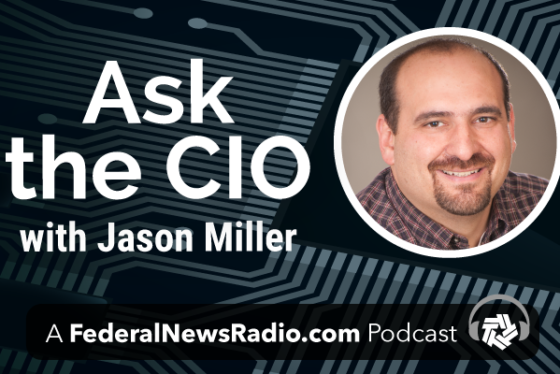Hubbard Radio Washington DC, LLC. All rights reserved. This website is not intended for users located within the European Economic Area.
Technology
-
It seems like there\'s an app for everything today. But what\'s the ROI on them? Kristen Purcell is an associate director for research at the Pew Internet and American Life Project.
September 16, 2010 -
According to a recent GAO report, there\'s now proof that national security and non-national security IT systems can work together effectively.
September 16, 2010 -
SCMagazineUS.com reports that the malware author who uses the handle \"iraq_resistance\" is believed to be part of the cyber-jihad organization \"Brigades of Tariq ibn Ziyad.\"
September 16, 2010 -
A number of leadership changes at the General Services Administration. GSA Administrator Martha Johnson has announced that Gail Lovelace, who has served as the chief people officer for the General Services Administration, will be taking…
September 16, 2010 -
What is Gov 2.0? Is it agencies using Twitter to blast press releases out to the masses? Is it members of Congress using iPads? Is it the adoption of widespread broadband usage?
September 16, 2010 -
People exercise risk management, consciously and unconsciously, every day. Many of us drive on a daily basis. Some speed, and risk the chance of getting caught, while others are more conservative and drive the exact speed limit. We base our decision on whether or not to exceed the speed limit on the information available to us at the time, including our knowledge, past experiences, or the conditions we see in front of us. We weigh the risks against impacts and consequences, making decisions based upon our tolerance for the outcomes. The same is true for federal cyber risk management. Securing federal information and assets in cyberspace is the primary driver behind cybersecurity. Even so, other factors help define risk, including the potential for negative publicity if a cyber breach occurs, the impact to budget/performance plans if FISMA grades fall short, or the potential for investigations or congressional hearings if the burning issue of the day burns a bit too bright for too long. Federal cyber risk management fundamentally boils down to making risk decisions based upon an agency\'s risk tolerance - and the drivers behind an agency\'s tolerance vary across the federal government. Risk is defined as the likelihood of a future event that may have unintended or unexpected consequences. Federal agencies make the best cyber risk management decisions by using data and information to evaluate the agency\'s strengths and weaknesses for delivering on its cyber mission in the context of potential threats. Agencies must use information and data from various disparate sources across the enterprise to make these decisions, including audit log information, vulnerability data, asset information, the agency\'s regulatory compliance status, external and internal threat activity, human capital risks to the cybersecurity mission, and many more. As challenging as it may be for agencies to consume large volumes of disparate data, it is a challenge that is essential to overcome for agencies to make the best cyber risk management decisions. Is this achievable? Absolutely. The business intelligence movement established the foundation allowing agencies to minimize risk exacerbated by ad-hoc decision-making. Leveraging business intelligence capabilities for cybersecurity enables agencies to aggregate data across technical and organizational stovepipes and to provide agency cybersecurity leaders with mechanisms for making informed, risk decisions. By better understanding the cyber landscape, federal cybersecurity leaders can - much like our speeding driver example - understand \"how fast\" to drive and make better investment decisions when addressing enterprise cybersecurity risks.
September 16, 2010 -
The FAA is transitioning between the worlds of ground-based and satellite-based systems. We get an update from Administrator Babbitt.
September 16, 2010 -
The Performance Work Statement (PWS) defines the requirements for the Contractor to provide non-personal services for Information Technology (IT) support to the United States Army Chief Information Officer (CIO)/G6, Cyber Information Assurance Directorate.
September 16, 2010 -
VA, SBA, EPA and HUD are the first to go through the review process and see dramatic changes. OMB controller Werfel said the goal for each agency is to invest only in top priorities, saving $1 billion a year by eliminating or reducing the size of agency modernization projects.
September 16, 2010 -
Open Plans has a new way for agencies to share ideas
September 15, 2010 -
Learn more in today\'s cybersecurity update
September 15, 2010 -
It’s back — the Federal News Radio Book Club. In fact, we haven’t had a “meeting” since April when we discussed Daniel Pink’s book Drive. For newcomers… Think of the Federal News Radio Book Club…
September 15, 2010
ASK THE CIO

THURSDAYS @ 10 & 2 p.m.
Weekly interviews with federal agency chief information officers about the latest directives, challenges and successes. Follow Jason on Twitter. Subscribe on Apple Podcasts or Podcast One.




